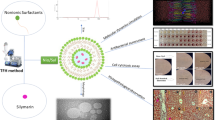Abstract
Purpose. The selection of cosalane (NSC 658586) by the National Cancer Institute for further development as a potential drug candidate for the treatment of AIDS led to the exploration of the solubility behavior of this extremely hydrophobic drug, which has an intrinsic solubility (S0) approaching 1 ng/ml. This study describes attempts to reliably measure the intrinsic solubility of cosalane and examine its pH-solubility behavior.
Methods. S0 was estimated by 5 different strategies: (a) direct determination in an aqueous suspension; (b) facilitated dissolution; (c) estimation from the octanol/water partition coefficient and octanol solubility; (d) application of an empirical equation based on melting point and partition coefficient; and (e) estimation from the hydrocarbon solubility and functional group contributions for transfer from hydrocarbon to water.
Results. S0 estimates using these five methods varied over a 5 × 109-fold range. Method (a) yielded the highest values, two-orders of magnitude greater than those obtained by method (b) (facilitated dissolution, 1.4 ± 0.5 ng/ml). Method (c) gave a value 20-fold higher while that from method (d) was in fair agreement with that from facilitated dissolution. Method (e) yielded a value several orders-of-magnitude lower than other methods. A molecular dynamics simulation suggests that folded conformations not accounted for by group contributions may reduce cosalane's effective hydrophobicity. Ionic equilibria calculations for this weak diprotic acid suggested a 100-fold increase in solubility per pH unit increase. The pH-solubility profile of cosalane at 25°C agreed closely with theory.
Conclusions. These studies highlight the difficulty in determining solubility of very poorly soluble compounds and the possible advantage of the facilitated dissolution method. The diprotic nature of cosalane enabled a solubility enhancement of >107-fold by simple pH adjustment.
Similar content being viewed by others
REFERENCES
W. M. Golebiewski, J. P. Bader and M. Cushman. Biorg. Med. Chem. Lett. 3:1739–1742 (1993).
M. Cushman, W. M. Golebiewski, Y. Pommier, A. Mazumder, D. Reymen, E. D. Clercq, L. Graham and W. G. Rice. J. Med. Chem. 38:443–452 (1995).
M. Cushman, W. M. Golebiewski, J. B. McMahon, R. W. Buckheit, Jr.,, D. J. Clanton, O. Weislow, R. D. Haugwitz, J. P. Bader, L. Graham and W. G. Rice. J. Med. Chem. 37:3040–3050 (1994).
D. K. Madan and D. E. Cadwallader. J. Pharm. Sci. 62:1567–1569 (1973).
H. Y. Saad and W. I. Higuchi. J. Pharm. Sci. 54:1205–1206 (1965).
A. Siedell. Solubilities of Organic Compounds, Van Nostrand, New York, 1940.
T. Higuchi, F.-M. L. Shih, T. Kimura and J. H. Rytting. J. Pharm. Sci. 68:1267–1272 (1979).
S. H. Yalkowsky and S. C. Valvani. J. Pharm. Sci. 69:912–922 (1980).
S. C. Valvani and S. H. Yalkowsky. In S. H. Yalkowsky, A. A. Sinkula, S. C. Valvani, (ed.) Physical Chemical Properties of Drugs, Marcel Dekker, Inc., New York, 1980, 201–229.
S. S. Davis, T. Higuchi and J. H. Rytting. In B. W. Barry, (ed.) Advances in Pharmaceutical Sciences, Vol 4, Academic Press, London, 1974, 73–261.).
J. T. Chou and P. C. Jurs. In S. H. Yalkowsky, A. A. Sinkula, S. C. Valvani, (ed.) Physical Chemical Properties of Drugs, Marcel Dekker, Inc., New York, 1980, 141–199.
R. Sijbesma, G. Srdanov, F. Wudl, J. A. Castoro, C. Wilkins, S. H. Friedman, D. L. DeCamp and G. L. Kenyon. J. Am. Chem. Soc. 115:6510–6512 (1993).
S. H. Friedman, D. L. DeCamp, R. P. Sijbesma, G. Srdanov, F. Wudl and G. L. Kenyon. J. Am. Chem. Soc. 115:6506–6509 (1993).
A. A. Noyes and W. R. Whitney. J. Am. Chem. Soc. 19:930–934 (1897).
D. J. W. Grant and T. Higuchi, Solubility Behavior of Organic Compounds, John Wiley & Sons, New York, 1990. (W. H. Saunders Jr., ed. Techniques of Chemistry; vol XXI).
B. D. Anderson and R. A. Conradi. J. Pharm. Sci. 69:424–430 (1980).
K. G. Nelson and C. L. De Ligny. Rec. Trav. Chim. Pays-Bas. 87:623–640 (1968).
I. N. Levine. Physical Chemistry, (3rd. ed.) McGraw-Hill, New York, 1988.
Author information
Authors and Affiliations
Rights and permissions
About this article
Cite this article
Venkatesh, S., Li, J., Xu, Y. et al. Intrinsic Solubility Estimation and pH-Solubility Behavior of Cosalane (NSC 658586), an Extremely Hydrophobic Diprotic Acid. Pharm Res 13, 1453–1459 (1996). https://doi.org/10.1023/A:1016059008464
Issue Date:
DOI: https://doi.org/10.1023/A:1016059008464




